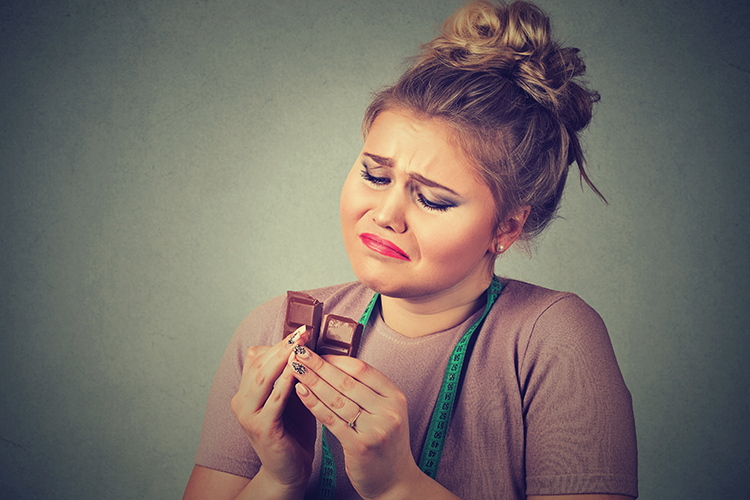Blog
Sugar and candida
 What are the images conjured when confronted with the word ‘Candida’?
What are the images conjured when confronted with the word ‘Candida’?
Whatever it is, it ain’t often a pretty one, and anyone who has experienced a Candida overgrowth understands it ain’t a great time. At all.
But why are we discussing this here at That Sugar? Well, because of sugar!
Candida loves the sweet stuff
If you are thinking a Candida overgrowth is a sexually transmitted infection (STI) – think again. It is very rare to transmit during sexy time. However, candidiasis can result following sex and share a similar set of symptoms to other STI.
The species Candida albicans is a normal part of the human flora and when in balance causes no worries to the human host. But, it LOVES to feed on simple sugars, and when consumed in excess this causes microbial populations to become imbalanced, known as a state of dysbiosis. This can result in an overgrowth of the species, increased cravings for sugar, and the condition known as candidiasis. Boo.
The overgrowth may also be a result of compromised mucosal barriers (possibly related to leaky gut), a weakened immune system, or other microbial species diminishing in number that would normally keep old mate Candida in check.3;4
Candida albicans overgrowth is commonly referred to as thrush, and often manifests in the mouth or genital and urinary tracts.
Symptoms of candidiasis include: 1;5
- Sweets cravings
- White coating on tongue
- Vaginal itching
- Vaginal discharge resembling cottage cheese
- Skin rashes, especially around groin and between fingers and toes
- Urinary tract infection
- Fatigue
- Depression
- Irritability
- Poor concentration.
These symptoms can be seen alongside digestive disturbances like food sensitivities, bloating, cramping, or altered bowel movements, bad breath, poor immune function and autoimmune conditions, allergies, chemical sensitivities, stress, joint pain, and recurrent or recent use of antibiotics, oral contraceptive pill or steroids. 1;4;5 Even liver function can be compromised, and if not treated or kept in check, Candida albicans can travel into the blood – that type of infection is not good!6
Treatments
If you are thinking this is something that will never happen to me – think again. About 75% of women can develop a yeast infection in their lifetime, and over 40million cases of Candidiasis are reported each year.3;5
Fortunately, there are treatments for managing Candida overgrowth.
So, cutting back on the sugary goods will deal with it, right? If only it were that simple!
The human body is a complex web of interweaving systems and functions, and each human is unique. Consulting with your trusted healthcare practitioner to assess your life as an individual and holistically is the best place to kick start a tailored treatment plan.
However, here are a few things to consider in the meantime: 2;5;6
- Limit or avoid refined and added sugars
- Limit or avoid alcohol
- Limit dairy and yeast containing products
- Consume a low glycaemic diet
- Include coconut oil, garlic, cinnamon, clove, oregano and sage for their anti-fungal properties.
- Include an abundance of non-starchy vegetables and low GI fruit such as berries to boost intake of immune supportive nutrients.
- Include prebiotic fibres to provide food for other microbial species that may help turn down the Candida party, and help heal leaky gut. This is particularly important after taking antibiotics (whether recently or in the past), or consuming other things that compromise microbial health.
The Candida Diet has been popular, but due to a lack of clinical trials, it is yet to be determined as to whether the shift in diet is due to consuming less crap and more nourishing whole foods.5
Ultimately, the more we include real whole foods in our every day to replace the refined stuff – particularly sugars and heavily processed and refined carbohydrates – the happier the balance of Candida will be.
By Angela Johnson (BHSC Nut. Med.)
References:
- Edwards, JE 2008, ‘Candidiasis’, in A Fauci, E Braunwald, D Kasper, S Hauser, D Longo, J Jameson & J Loscalso (eds), Harrison’s Principles of Internal Medicine, 17th edn, McGraw Hill Medical, Sydney, pp. 1254-1256.
- Hechtman, L 2012, Clinical Naturopathic Medicine, Churchill Livingstone, Chatswood, N.S.W
- Naglik, JR, Richardson, JP, & Moyes, DL 2014, ‘Candida albicans pathogenicity and epithelial immunity’, Plos Pathogens, vol. 10, no. 8, p. e1004257.
- Spampinato, C, & Leonardi, D 2013, ‘Candida infections, causes, targets, and resistance mechanisms: traditional and alternative antifungal agents’, Biomed Research International, vol. 2013, p. 204237.
- University of Maryland 2015, Candidiasis, viewed 14 June 2016, <http://umm.edu/health/medical/altmed/condition/candidiasis>.
- Vengurlekar, S, Sharma, R, & Trivedi, P 2012, ‘Efficacy of some natural compounds as antifungal agents’, Pharmacognosy Reviews, no. 12.











